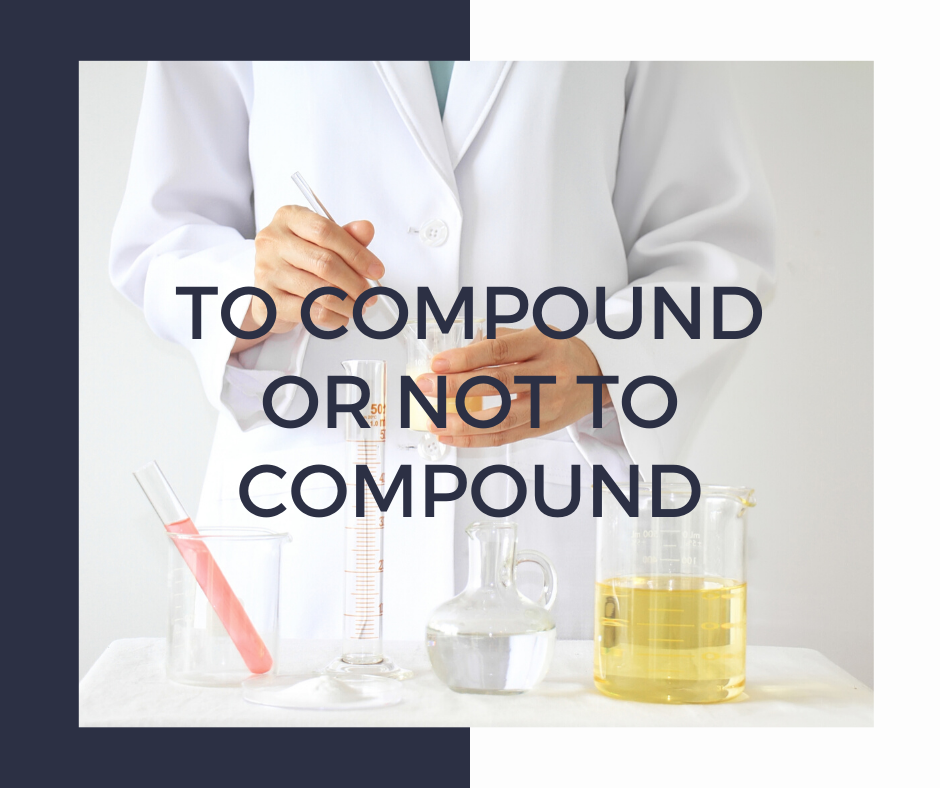JDD Author and Senior Associate Editor, Dr. Leon Kircik, dives into the controversial and confusing landscape of in-office medication compounding.
In-office compounding, once part and parcel of dermatologic practice, has become increasingly controversial—and confusing. As a result of legitimate public health concerns, FDA scrutiny began with compounding facilities. Unfortunately, regulatory focus has shifted to compounding by individual physicians in their offices, especially to dermatology practices. Without doubt, compounding remains necessary in certain instances, and we, as dermatologists, are actively seeking to protect our right to compound needed drug formulations in our offices. Some treatments simply are not there for us on the market in their final applicable forms, either because the required active or combination of actives are not available or because a certain vehicle base is not provided. Additionally, some of the drugs we use for in-office procedures are only available via compounding.
While in-office compounding is a time-honored practice that ought to be protected, the reality is that most dermatologists would prefer to have access to appropriate final formulations that would reduce the need to compound. There are many benefits to finished product, not the least of which is convenience for the physician and the patient. Finished formulations offer consistency of concentration and dose, as well as reliable efficacy and safety. Finished formulations also offer shelf-stability in practice-friendly packaging, meaning that practices don’t need to maintain as much inventory of raw active drugs and excipients, which may expire before they are used up.
A Case to Consider
Consider the case of cantharidin, which has been used for some time as an effective in-office treatment for molluscum, one of the most challenging pediatric presentations in the dermatology clinic. The status of cantharidin has changed recently so that it is now listed as a 503B category 1 agent, indicating that it may only be available in bulk orders with overwhelming amount of bureaucratic paperwork requirements. For most dermatology practices, this is simply not practical, since most of the product would likely expire before it is used to treat patients as well as meeting regulatory requirements, which are impossible to comply with in our fast-paced practices.
Additionally, while many dermatologists have successfully offered cantharidin treatment in their offices in the past, there has been concern about appropriate dosing. Administration of cantharidin at too low a concentration may impair efficacy, while too high a concentration may elicit a robust blistering response that may cause not only unnecessary discomfort for patients but also unwanted medical legal headaches for us.
This is a situation where the availability of an FDA-approved formulation for in-office use would be beneficial to physicians and patients. In fact, VP-102 topical cantharidin 0.7% film solution is currently pending approval by the FDA for the treatment of molluscum contagiosum after completion of phase 3 studies in the pediatric population. If approved, this novel film solution would obviate concerns about access, since the formulation would be readily available to be used in our offices. Additionally, a branded formulation offers the guarantee of consistency in the concentration of active, a known vehicle base, a consistent delivery technique, and documented clinical experience in rigorous, randomized, controlled trials for its efficacy and safety.
As we continue to monitor FDA action with regards to drug compounding, it is important that we as dermatologists advocate for our rights as physicians and for the needs of our patients. We must preserve our right to compound appropriately in the clinic when an alternative is not available. At the same time, we do recognize that branded formulations provide a tremendous benefit to us and our patients, not the least of which are consistency, hence, efficacy and safety in addition to convenience. As the regulatory landscape shifts and the market place evolves, we continue to optimistically watch innovation in the drug space. The development of novel branded formulations of time-tested drugs like cantharidin will be a welcome addition to our treatment armamentarium.
Stay tuned for a 2-part series where Dr. Kircik along with JDD authors Vlatka Agnetta MD, Abel Torres MD JD MBA, Seemal R. Desai MD, and Adelaide A. Hebert MD, review the regulatory landscape of compounding in dermatology, including federal and state regulations, FDA and USP compounding lists/categories, and what the future holds for this time-honored practice.
Source:
Leon H. Kircik MD (2020). To Compound or Not to Compound. Journal of Drugs in Dermatology, 19 (2). https://jddonline.com/articles/dermatology/S1545961620S0016X/1
Content used with permission from the Journal of Drugs in Dermatology.
Adapted from original article for length and style.
Did you enjoy this article? Find more on Medical Dermatology here.
Next Steps in Derm is brought to you by SanovaWorks.

